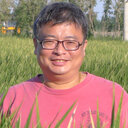Characterization of the 2,3-Oxidosqualene Cyclase Gene from Antrodia cinnamomea and Enhancement of Cytotoxic Triterpenoid Compound Production.
キーワード
概要
Antrodia cinnamomea is a scarce, epiphyte, host-specific, brown-rot fungus that produces diverse bioactive compounds with potent biological activity. Natural wild-type fruiting bodies of A. cinnamomea are rare and highly valued, but their artificial culture poses challenges. Triterpenoids are a group of secondary metabolites that contribute to the bioactivities of A. cinnamomea. 2,3-Oxidosqualene cyclase (OSC) is a key enzyme in triterpenoid biosynthesis, which converts 2,3-oxidosqualene (OS) into polycyclic triterpenoids. In this study, we isolated a 2,3-oxidosqualene cyclase gene from A. cinnamomea with degenerate primers and designated it as AcOSC. The full length AcOSC cDNA was subcloned into a yeast expression vector, and AcOSC activity was confirmed. RT-PCR results showed that AcOSC expression was highest in the wild-type fruiting body and correlated with a higher concentration of triterpenoids. Agrobacterium-mediated gene transformation was conducted to enhance the triterpenoid synthesis capacity of the cultured mycelium. Metabolite profiling was conducted by LC-MS/MS and principal component analysis (PCA). The compositions and contents of metabolites in the AcOSC transgenic lines were different from those in the wild-type mycelium and vector control. The levels of two important triterpenoids, dehydrosulphurenic acid (DSA) and dehydroeburicoic acid (DEA), were increased in A. cinnamomea oxidosqualene cyclase overexpression strains compared to controls. In summary an Agrobacterium-mediated gene transformation procedure was established that successfully increased the level of transgene expression and enhanced the triterpenoid content in cultured A. cinnamomea.


